Description
Halley’s Comet is a hybrid dragon fruit (Hylocereus undatus × Hylocereus guatemalensis) renowned for its vibrant appearance and delightful flavor.
1. Basic Overview
- Variety Name: Halley’s Comet
- Species: Hylocereus undatus × Hylocereus guatemalensis
- Origin: Developed through hybridization; specific origin details vary.
- Significance: Celebrated for its large fruits, striking purple flesh, and sweet taste.
2. Visual Appeal
- Whole Fruit: Bright pink skin with green-tipped fins, creating a vibrant contrast.
- Cross-Section: Reveals deep magenta to purple flesh speckled with small black seeds.
- Flowers and Plant: Produces large, nocturnal white flowers, often over 13 inches across, blooming throughout the summer.
3. Physical Characteristics
- Skin Color and Texture: Pink exterior with green-tipped fins; smooth and firm skin.
- Flesh Color: Deep magenta to purple.
- Fruit Size and Shape: Medium to large, typically weighing between 1 to 2 pounds; oval to slightly rounded shape.
- Seed Distribution: Evenly distributed small black seeds throughout the flesh.
4. Taste Profile
- Flavor Description: Sweet and refreshing, with flavor notes reminiscent of sweet plums or strawberries.
- Sweetness Level: Average Brix score of 16, indicating a moderate to high level of sweetness.
5. Growing Characteristics
- Climate Requirements: Thrives in tropical and subtropical climates; prefers warm temperatures and can tolerate full sun with minimal sunburn.
- Plant Type: Strong but less aggressive grower; can reach heights of 3-4 feet.
- Flowering Habits: Blooms all summer with large, nocturnal flowers; self-pollinating but benefits from cross-pollination for better fruit set.
- Pollination: Partially self-fertile; cross-pollination with other varieties can enhance fruit production.
6. Cultivation Tips
- Soil Requirements: Prefers well-draining soil rich in organic matter; a cactus mix can be beneficial.
- Sunlight and Temperature Needs: Requires full sun to partial shade; protect from frost and extreme temperatures.
- Watering Needs: Water moderately, allowing the soil to dry out between waterings to prevent root rot; reduce watering during cooler months.
- Support Structures: Provide trellises or stakes to support the climbing habit and encourage proper growth and air circulation.
7. Harvesting and Productivity
- Harvest Time: Fruits are typically ready for harvest 30-40 days after flowering when the skin color changes to a vibrant pink, and the fruit yields slightly under gentle pressure.
- Fruit Yield per Plant: Proven to be a good producer; with proper care, it can yield multiple fruits per season.
- Ripening Indicators: Skin color transition to bright pink and slight softness upon gentle pressure indicate ripeness.
8. Uses and Applications
- Culinary Uses: Ideal for fresh consumption, smoothies, salads, desserts, and as a garnish; its sweet flavor and vibrant color enhance various dishes.
- Nutritional Benefits: Rich in vitamins, antioxidants, and dietary fiber; contributes to overall health and wellness.
- Ornamental Uses: The plant’s large, fragrant flowers and vibrant fruits make it an attractive addition to gardens and landscapes.
9. Fun Facts
- Name Origin: Named after the famous Halley’s Comet, possibly due to its striking appearance and the plant’s impressive, large blooms.
- Flowering: The large, nocturnal flowers are not only visually stunning but also attract night pollinators, adding to the plant’s ecological value.
10. Comparison Chart
| Variety Name | Flesh Color | Skin Color | Average Weight | Brix Rating | Pollination |
| Halley’s Comet | Purple | Pink with Green Fins | 1–2 lbs | 16 | Partially Self-Fertile |
| Physical Graffiti | Light Purple | Pinkish-Red with Green Bracts | Up to 1.5 lbs | ~18 | Self-Sterile |
| Purple Haze | Light Purple | Bright Pink with Greenish-Red Skin | Medium | 18+ | Self-Fertile |
11. Frequently Asked Questions (FAQs)
- Is Halley’s Comet dragon fruit self-pollinating?
It is partially self-fertile but benefits from cross-pollination with other varieties for optimal fruit production. - How does Halley’s Comet compare to other dragon fruit varieties?
Halley’s Comet is known for its large fruit size, vibrant purple flesh, and balanced sweetness, making it a popular choice among dragon fruit enthusiasts. - What is the ideal climate for growing Halley’s Comet?
It thrives in tropical and subtropical climates with warm temperatures and can tolerate full sun with minimal sunburn. - How long does it take for Halley’s Comet dragon fruit to mature?
Fruits are typically ready for harvest 30-40 days after flowering. - What are the common uses of Halley’s Comet dragon fruit?
It is versatile in culinary applications, including fresh consumption, smoothies, salads, and desserts.
12. Reviews/Testimonials
- User Reviews:
- “A reliable producer in my garden! Halley’s Comet grows well and produces consistently large and sweet fruits. The flavor is amazing.”
- “Its striking purple flesh and mildly sweet flavor make it one of my favorite dragon fruit varieties. The blooms are also a sight to behold.”
- Grower Testimonials:
- “Halley’s Comet is a solid addition to any dragon fruit collection. Its large flowers and dependable yield make it perfect for both ornamental and productive use.”
- “As a commercial grower, I appreciate Halley’s Comet for its market appeal. The large, vibrant fruits always attract attention at the market.”


Reviews
There are no reviews yet.